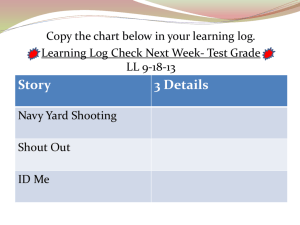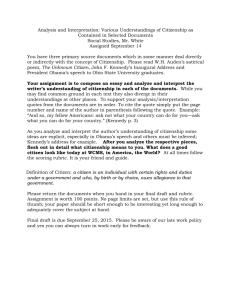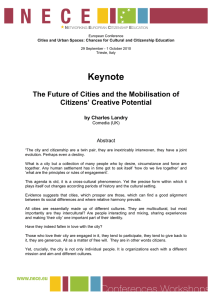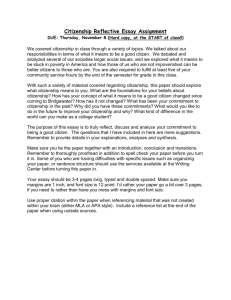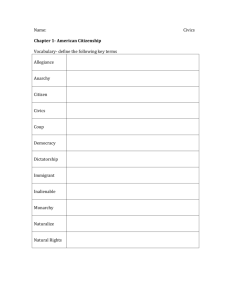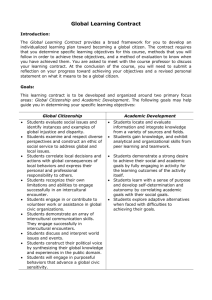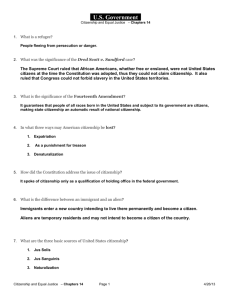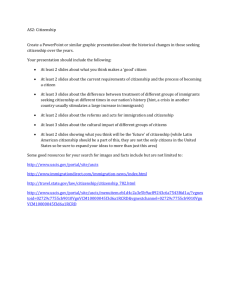Abstract
advertisement
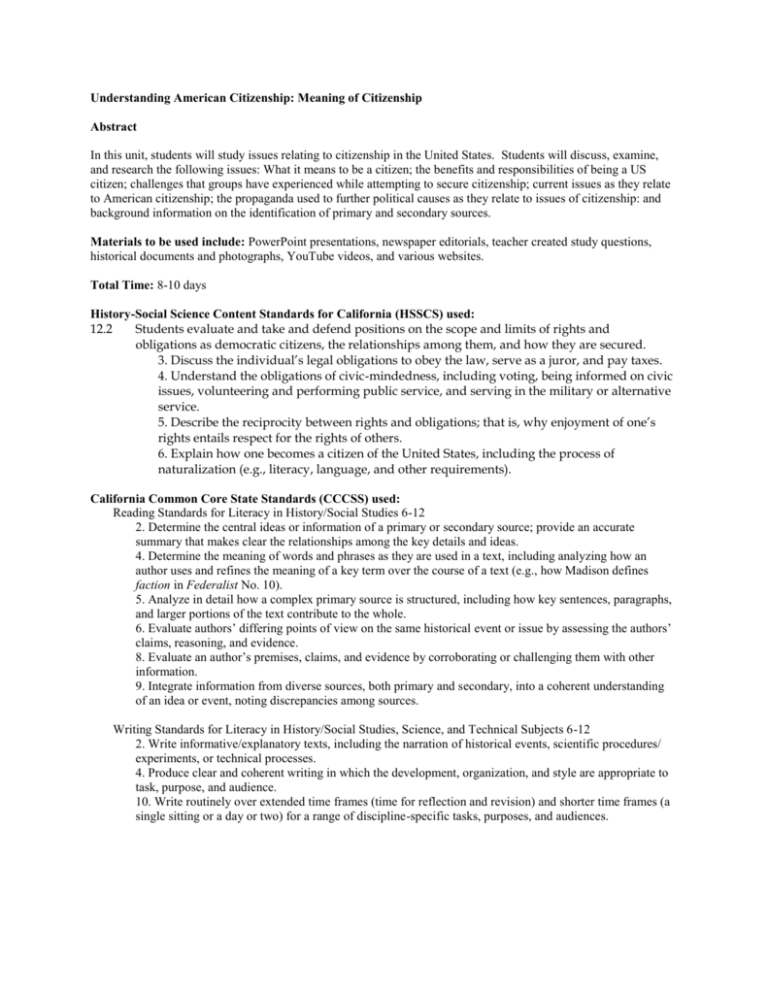
Understanding American Citizenship: Meaning of Citizenship Abstract In this unit, students will study issues relating to citizenship in the United States. Students will discuss, examine, and research the following issues: What it means to be a citizen; the benefits and responsibilities of being a US citizen; challenges that groups have experienced while attempting to secure citizenship; current issues as they relate to American citizenship; the propaganda used to further political causes as they relate to issues of citizenship: and background information on the identification of primary and secondary sources. Materials to be used include: PowerPoint presentations, newspaper editorials, teacher created study questions, historical documents and photographs, YouTube videos, and various websites. Total Time: 8-10 days History-Social Science Content Standards for California (HSSCS) used: 12.2 Students evaluate and take and defend positions on the scope and limits of rights and obligations as democratic citizens, the relationships among them, and how they are secured. 3. Discuss the individual’s legal obligations to obey the law, serve as a juror, and pay taxes. 4. Understand the obligations of civic-mindedness, including voting, being informed on civic issues, volunteering and performing public service, and serving in the military or alternative service. 5. Describe the reciprocity between rights and obligations; that is, why enjoyment of one’s rights entails respect for the rights of others. 6. Explain how one becomes a citizen of the United States, including the process of naturalization (e.g., literacy, language, and other requirements). California Common Core State Standards (CCCSS) used: Reading Standards for Literacy in History/Social Studies 6-12 2. Determine the central ideas or information of a primary or secondary source; provide an accurate summary that makes clear the relationships among the key details and ideas. 4. Determine the meaning of words and phrases as they are used in a text, including analyzing how an author uses and refines the meaning of a key term over the course of a text (e.g., how Madison defines faction in Federalist No. 10). 5. Analyze in detail how a complex primary source is structured, including how key sentences, paragraphs, and larger portions of the text contribute to the whole. 6. Evaluate authors’ differing points of view on the same historical event or issue by assessing the authors’ claims, reasoning, and evidence. 8. Evaluate an author’s premises, claims, and evidence by corroborating or challenging them with other information. 9. Integrate information from diverse sources, both primary and secondary, into a coherent understanding of an idea or event, noting discrepancies among sources. Writing Standards for Literacy in History/Social Studies, Science, and Technical Subjects 6-12 2. Write informative/explanatory texts, including the narration of historical events, scientific procedures/ experiments, or technical processes. 4. Produce clear and coherent writing in which the development, organization, and style are appropriate to task, purpose, and audience. 10. Write routinely over extended time frames (time for reflection and revision) and shorter time frames (a single sitting or a day or two) for a range of discipline-specific tasks, purposes, and audiences.
